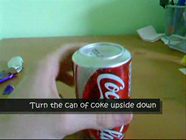A nocturnal frog that dwells in the ponds and lagoons of the Amazon could prove to be an unlikely lifesaver for millions of people suffering from diabetes, researchers say.
The South American “paradoxical frog” (Pseudis paradoxa) owes its name to an uncanny ability to shrink as it grows older.
Scientists studying the properties of its slimy skin have found a substance that can stimulate the release of insulin, the vital hormone that is deficient in sufferers from diabetes.
Scientists have made an artificial copy of the peptide, a protein-building block that protects the frog from infection, and have suggested that it could be used to boost insulin production in people with Type 2 diabetes.
In laboratory tests, researchers found that the paradoxical frog’s peptide, known as pseudin-2, increased release of insulin in cultured cells by 50 per cent. However, more work must be carried out before the therapy is ready to be tested on human patients.
Currently there are 2.3 million diagnosed sufferers from diabetes in the UK, most of whom have the Type 2 form of the disease. Usually occurring in middle age, Type 2 diabetes is strongly associated with lifestyle factors such as obesity and develops because the body does not produce enough insulin or becomes resistant to the concentrations available.
The joint team from the University of Ulster in Northern Ireland and United Arab Emirates University believe that a synthetic version of pseudin-2 could join a new class of medicines, called incretin mimetics, that help diabetics to control their condition when dietary changes or other medicines have failed.
The skin secretions of frogs and other amphibians are being investigated as a rich source of biological agents that may lead to new drugs.
Byetta, a diabetes drug based on the saliva of an endangered lizard, the Gila monster of North America, is already available in the UK. But scientists believe that the frog’s secretions could be even more effective. Paradoxical frogs are one of the few animals whose young are bigger than their parents, with tadpoles growing up to 27cm (11in) in length while the mature frogs are only about 4cm long.
Yasser Abdel-Wahab, senior lecturer in biomedical sciences at the University of Ulster, said that the chemistry of amphibian peptides was very similar to that of some mammalian counterparts that help to regulate blood sugar. He studied samples from several different species of frog before finding the desired effect, he said.
“We are at an exciting stage with this research,” he said. “We have tested a more potent synthetic version of the pseudin-2 peptide and have found that it has the potential for development into a compound for the treatment of Type 2 diabetes. Now we need to take this a step further and put our work into practice to try and help people with Type 2 diabetes.
“More research is needed, but there is a growing body of work around natural anti-diabetic drug discovery that is already yielding fascinating results.”
Further details of the research will be presented today at the Diabetes UK Annual Professional Conference in Glasgow.
Diabetes is a condition in which the amount of glucose (sugar) in the blood is too high because the body cannot use it properly. Normally insulin is produced by cells in the pancreas in the right amounts needed to regulate blood sugar levels.
In Type 2 diabetes, the beta cells that produce insulin may fail to respond adequately to changes in blood glucose concentrations after a meal. Type 1, also known as insulin-dependent diabetes, is a less common disease that results in the complete destruction of insulin-producing cells.
Douglas Smallwood, Chief Executive of Diabetes UK, said: “We welcome this innovative research that could benefit some of the two million people in the UK with Type 2 diabetes.
“Although it can be managed with diet and physical activity, Type 2 diabetes is progressive and may require tablets and/or insulin to control it effectively. Good diabetes control reduces the risk of complications including blindness, heart disease, kidney problems and amputation, so new treatments are vital.”
Short hop to healing
— The tadpoles of the paradoxical frog, right, grow to 27cm (11in), more than three times larger than their parents, which are 4cm to 6.5cm in length. As it takes on its adult form, the frog shrinks to its mature size. Scientists have yet to come up with a biological explanation but the tadpoles’ giant size may be the result of exposure to prolactin, a hormone.
— Pseudis paradoxa is found in permanent ponds with floating vegetation in South America and Trinidad. The frog remains in the water most of the time, often with just its bulging eyes poking above the surface.
— Feeding on larvae, small insects and tiny invertebrates, the frog is mainly active at night except during its breeding season, when the males may make loud, croaking calls at any time. These calls attract the females to come to the males and mate with them. Then they lay their eggs among the plants in the water. The eggs, grouped in clusters, hatch into tadpoles.
— Much of the length of the tadpole is in its tail and once that shrinks away, the froglet is much smaller. Most frogs and toads are at about 10-20 per cent of their adult size when they metamorphose.
Original here









